#analogue synth textures
Explore tagged Tumblr posts
Text
スブロサ - SUBROSA
youtube
This was one of the few album tracks that was legally previewable before the album launch, and even just from a brief SMS snippet, it was clear that this was metal-banging Industrial EBM at its finest. The prowling panther beat of Yuta’s hip-hop bass plays off a sproingy synth-bass lick, the backbone of the 80s Industrial sound*. Endlessly repeating, weird electronic squiggles of sound are run through heavy filters to emulate robotic chatter. It even features a mentasm Hoover Synth. And, of course, the Aphex Twin-pioneered micro-edited, infinitely fast snarerushes and LFO-twiddling that seem to collapse the song into itself during the breaks.
*There’s some controversy as to the original of this tone: depending on who you ask, it was invented by either NU Unruh hammering a giant spring with Einstuerzende Neubauten (the ‘Bassfeder’ comes in about 0:17); or Chrislo Haas’ analogue synth work, as one of the founders of DAF, a band whose aggressive minimalism would become the blueprint for the European EDM sound.
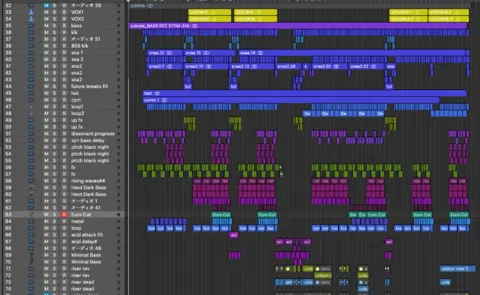
Yokoyama-san’s working notes on the track reveal the incredibly complex editing work, like an auditory jigsaw puzzle. (The track names are incredible: "Dissonance Progress"; "Pitch Black Night"; "Future Breaks"!) You can see the beats double, quadruple, multiply exponentially as the cuts become smaller and denser. The stereo manipulation is mindblowing - truly a song made for headphones! - as sounds flicker and skitter and pan in every direction. He said that Imai “insisted on leaving out his guitar (even though the guitar can still be heard)”. £5 reward to anyone who can spot any guitar on the track!
Imai also revealed in an interview, that this song was originally written during the Izora sessions, and rewritten for Subrosa. Imai’s playful raps and dizzying flow are so perfect for the song’s swaggering attitude that I can’t imagine how Sakurai would have sung it. I fear it might have become something in a playful, slightly silly vein a la Gustave. (I love Gustave as much as anyone, but it has a very different atmosphere.) But instead, Imai created a blueprint for a far more dance-oriented, synthesiser-based B-T Mk II. Vocals here are just another instrument: more of a rhythmic element than a melodic one; a background textural element to provide colour, rather than the main figure of the foreground.
Favourite moments: oh, there are just too many to count. Maybe the very end of the ecstatic drop, where the Jungle beats from 2:20 give way to the scratched (phased out? Leslie-speakered?) vocals coming in at 2:34. Very Beastie Boys – memories of my first time hearing their mixture of acid rock and hip-hop on Check Your Head in pot-scented student digs in New York. Can you imagine the stereophonic fun they could have with a pair of these babies?

The NOIZE solos at 3:11 and 3:27 (these would sound great live on a theremin, Mr. Imai, hint hint!) The stereo-panned sawtooth tremolo synth that comes in during the very last verse (starting at about 4:05) like a flash forward to the extreme noise-gating of Muyubyo’s guitars? It’s the tiny sonic details that make Buck-Tick so moreish – I’ve listened to this song dozens of times and on each deep listen, I catch another tiny sound I hadn’t noticed before. (I just caught a tiny stereo twitch in the synths at 1:58!) It works as a pop song – the irresistible panther rhythm and the strutting vocals drive it along with charismatic velocity – but the detail and complexity of the soundscape is like the whirling, ornate pattern of a Persian carpet you can lose yourself in forever.
8 notes
·
View notes
Text
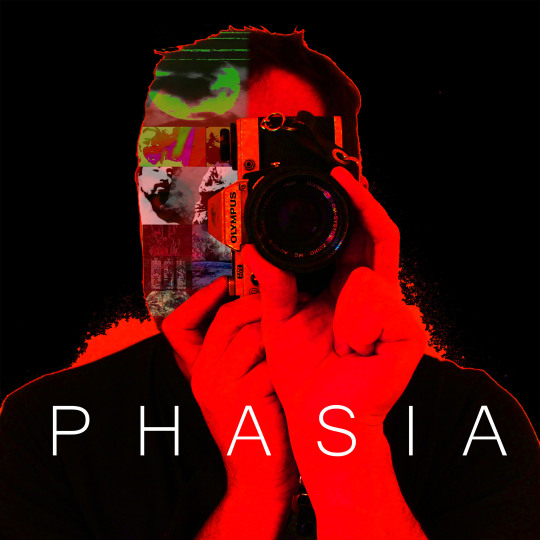
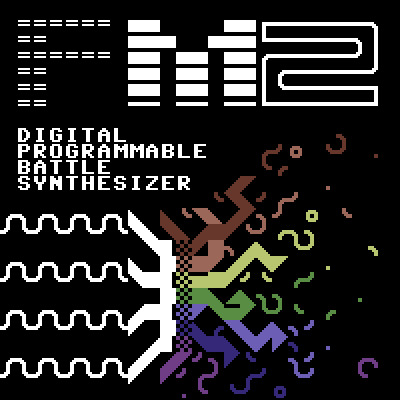


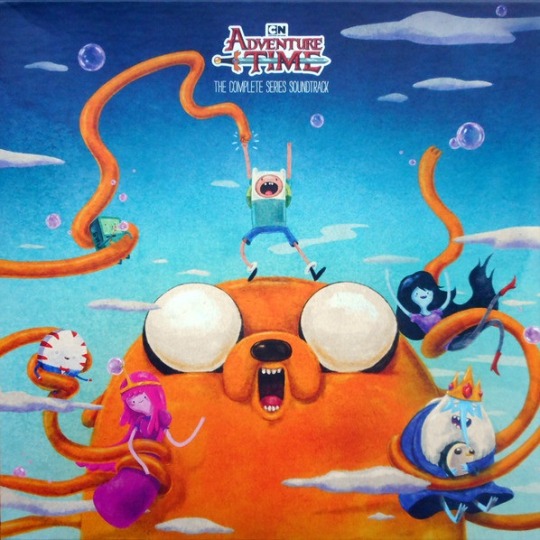

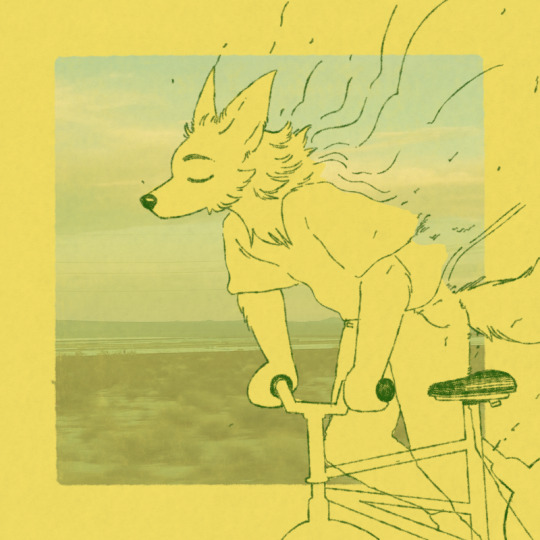
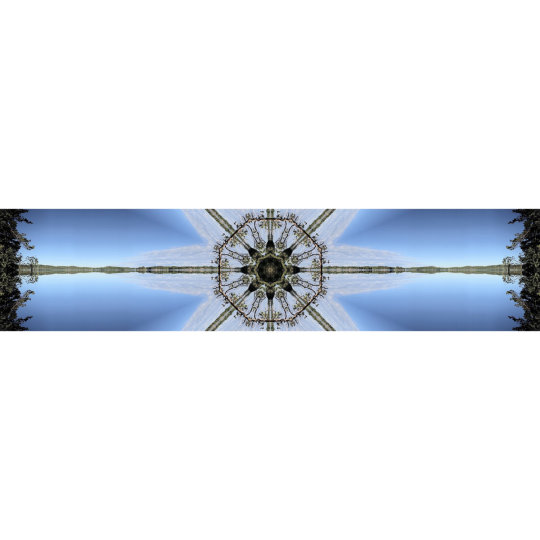
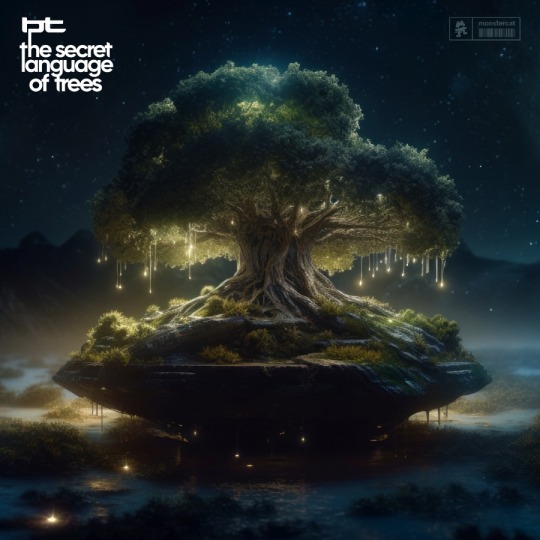

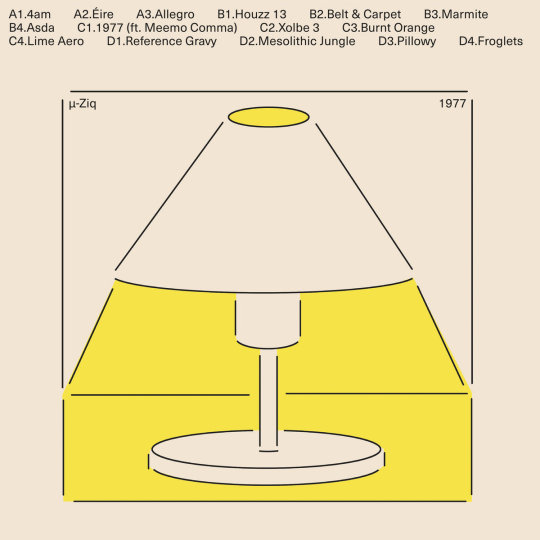
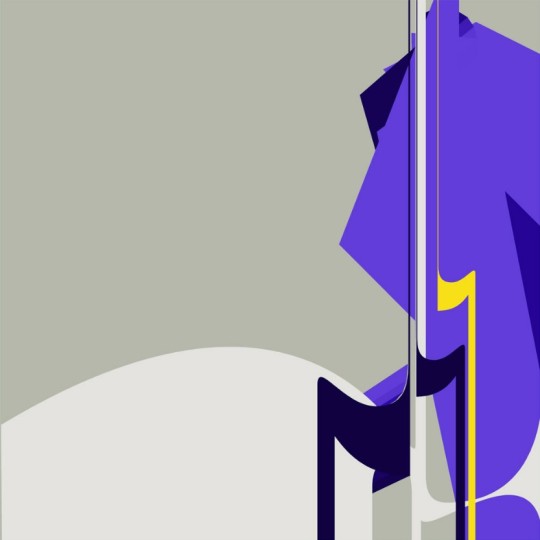
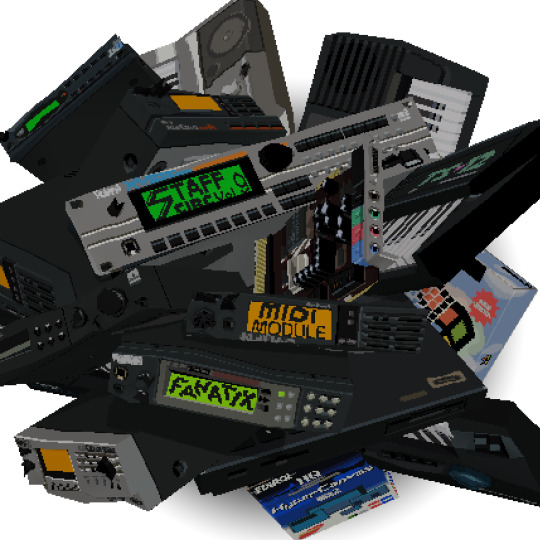
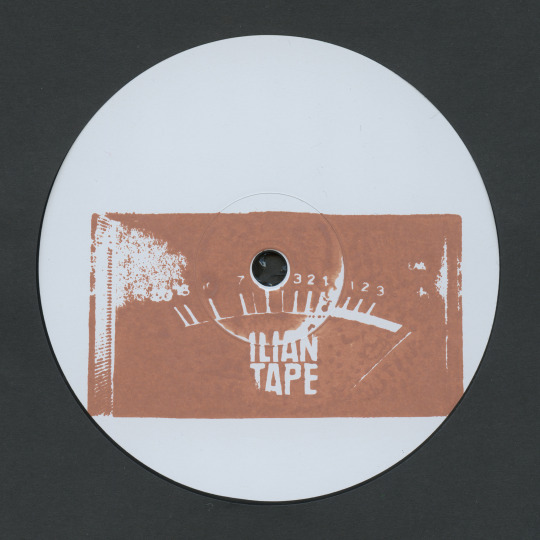
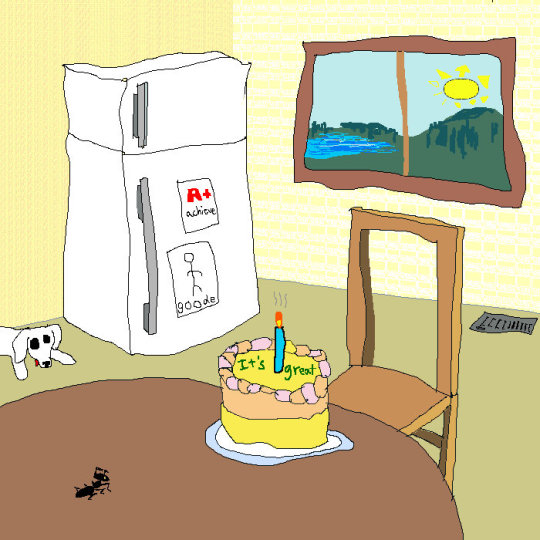
selected albums ive listened to in 2024
this year I'm just posting the highlights so itll be shorter
[1] [2]
January
1/ VHS Head - Phasia (2023) first new album of '24 for me! "Strange Food" that zap pew beat is a delight! title track is p good, floaty. "Phocus" this is very vaguely leaning into…funk? i really like it. possible highlight? wondering why it shares the title of a different album.
---
4/ VA - FM Synth 2 (2017) yeah i love fm "Mach 5 Fusion Force X" is a god damn tour de force. insane! "Work Without Rules" second fav of mine for its smoov smoov swingy wobs
---
7/ Skee Mask - C (2024) first 2024 album in the list! dusty, crispy, chillout. analogue. deep bass when needed, never too thick of a presence. delightful chillout music. at worst, its a bit varied, as if it were an anthology. probably because it is. highlight: "Bassline Dub"
---
12/ (all OCRemix posts from 2017) all over the place ofc some insano selections: "Multi-track Drifting" N R G!!! "Big Room Gobi" funny but in a goes hard way also: Star Salzman's Katamari mix!!! i keep coming back to that in particular
----
15/ VA - Adventure Time, Vol. 1-5 (2019) they have extended versions of some sc cuts!! "Party With the Chief" esp(!) the biggest thing I noticed overall: this soundtrack is so…wack. meandering. ADHD in control of a quirky ensemble. continually amazed that this's from a hit show
---
16/ Diverse System - JAPAN 2 (2023) a mostly rly good grab bag of bangers with a japan flavor! i adore the koto mixed in with tight electric beats. big big standouts with "灯火" !!! and the much more electric "Amatsu"
---
17/ Patricia Taxxon - Bicycle (2024) laid back (mostly) textures n vibes. instant fav in "Frat Claws" and "I Do" specifically! i really like the FEEL within the sounds. i keep coming back to "Chipshop" and "Boys". visceral.
---
23/ Aleksi Perälä - Starlight 1 (2018) surprisingly solid, albeit a bit all over the place much love for the smooth sounds of "UK74R1823040" much love for the stepfiltered "UK74R1823090" not as much a fan of the techno flavors this time but still!
it's hard to recommend this artist in general but ive been listening to a lot of AP music. just give those two highlights a try and see what you think.
---
February
25/ BT - The Secret Language of Trees (2023) THE GOOD STUFF Producer's Cuts especially!!! "k-means clustering"……. the clicks in "Time Moves So Fast"…. if you ever wished ppl made more music from 2007, here it is. a return to the binary universe.
----
40/ Tom Bragl - Regainable (2024) a few crunchy niceities, but just a few imo. "Klamra" f.ex. feels very 2007, which IS a delight. for anyone who wishes they made more music from 2007. here it is. funny it's marketed as "80s esque" lol. i hear it tho.
----
43/ µ-ziq - 1977 (2023) mike has a very distinct style that stands out from a lot of his peers imo. i wasnt sure about this but the reverbed minimalist drum machine in tracks like "4am" and "Belt & Carpet" win me over. I think those two and the weirdly hazy house of "Houzz 13" are my favs. "4am" especially, with those ethereal (newage?) chopped vocals
----
44/ Autechre - 2005-4-15 Glasgow (live set) apparently there are some old soundboard recordings laying around!!! this is super good. quaristice stuff. i love love love the multiple variations of chence9! the fast version of IO is rly good too. ez fav but still.
----
March
47/ STAFFcirc vol. 9: MIDI MODULE FANATIX (2024) oh hell yes, midi AND rompler!!! "Thunder and Strawberry Wine" is otherworldly. i get how it was made but also. How? ooooghhh… "30 Domcaster St" delightful ooooghhh… "Cascade rev.2023" authentic zest "Yakumotatsu" god i love this trend of pushing msgs midi to the max "tunnel7_r35b" listen i love chimeratio and he brought his slapping
----
57/ Fields Of Mist - Biospore Farmers (2024) try not to compare to boc challenge: impossible. it's lush damnit. but the perc is way way more analogue drummachine. its wall to wall good. that opening track would have blown my mind in 2007. they dont make it like that anymore, except i guess they do!
----
60/ pilotredsun - Achievement (2016) an album misplaced in time. pristine early 00s bedroom musician vibes.
----
3 notes
·
View notes
Audio
XOA - After Burner - EP from London jazztronica quartet
Having previously released music via Soundway Records and Five Easy Pieces, South London based producer XOA (AKA Nick Tyson) caught the ears of Gilles Peterson, DJ Mag, Boiler Room, Red Bull, XLR8R (and more) with his use of rich analogue sonics, steeped in the electronic sounds of London’s musical underbelly, blending vibrant textures and cosmic melodies, melding afro-beat and jazz sensibilities with house and techno. Re-emerging last year with a new direction and meaning: hard hitting Jazz with big analogue electronic sounds, along with a four-person outfit (which features Tyson (Bass & Electronics) joined by Johnny Tomlinson (Synths / Fender Rhodes), Josh Arcoleo (Tenor Saxophone) and Joost Hendrickx (Drums).
Forthcoming release ‘After Burner’ gives a fuel injection to the outfit, elevating XOA’s music to new and dizzying heights. From the rich tones of lift-off of the intro ‘Drawing Light’, through the intricately composed textures of ‘Invisible Shapes’ to the driving and pulsating title track ‘After Burner’; culminating in the vast and contemplative finale of ‘Final Ascent’. Cover art: Carl Cashman.
6 notes
·
View notes
Text
Download Sample Magic Retro Electronica

Transport your productions back in time with Sample Magic Retro Electronica, a captivating collection of timeless electronica and hazy musical atmospheres that will add depth, warmth, and groove to your tracks. This retro-inspired pack is perfect for producers looking to dive into the soundscapes of IDM, Synthwave, and post-internet genres, offering an irresistible fusion of neon funk, glistening melodics, and groove-laden rhythms at 80-90 BPM.
Retro Electronica is a treasure trove of retro-inspired sounds, featuring huge polyphonic synths, bumping analogue bass riffs, and undulating arpeggios that evoke the nostalgia of the ’80s and ’90s. Each sound is meticulously crafted to deliver the rich, booming retro beats and electronic textures that define the era, making it an essential toolkit for producers who want to create deep, immersive, and detailed dance music.
Whether you're crafting slow-burning grooves or intricate electronica soundscapes, Sample Magic Retro Electronica provides all the tools you need to elevate your productions. The pack combines modern production techniques with the warmth of vintage hardware, giving your tracks a unique blend of the old and the new.
Perfect for fans of IDM, Synthwave, and chill electronica, this collection is sure to inspire creativity and transport listeners to an era dripping with neon lights and pulsating rhythms.
Get your hands on Sample Magic Retro Electronica today from AudioLoops and start crafting timeless, retro-inspired electronica!
0 notes
Text
How to download Melodic House & Techno 2 (Sample Packs)

In the world of underground dance music, finding the perfect toolkit to enhance your productions can be a game-changer. The "Melodic House & Techno 2" sample pack is a meticulously crafted collection designed to bring your tracks to life, whether you're delving into Techno, Progressive, Deep, or Tech House genres. This comprehensive production toolkit is packed with a vast array of high-quality elements, making it an indispensable resource for any serious music producer.
Discover the Core Elements
"Melodic House & Techno 2" offers a rich palette of sounds, including dark, driving basslines that add depth and energy to your tracks. The hard-hitting beats are designed to keep the dance floor moving, while the key-labeled kick drums ensure your rhythm section is always in tune. The pack also features beautifully crafted analogue synth loops and hits, providing a lush, warm texture that can elevate your productions to new heights.
Versatile and Flexible
This sample library isn't just about loops and hits; it's a complete music production resource. Alongside the cutting-edge audio samples, you'll find MIDI files that correspond with the bass and synth loops, offering you maximum flexibility to customize and tweak your sounds. Additionally, the pack includes presets for popular synthesizers such as Spire and Sylenth1, allowing you to seamlessly integrate these sounds into your existing setup.
Enhance Your Skills
As with all Sample Tools by Cr2 packs, "Melodic House & Techno 2" goes beyond just providing sounds. Included are three prod-cast video tutorials that walk you through the techniques used in the pack, giving you valuable insights into the production process. Moreover, the pack features a video by Mike Monday, a renowned expert in the psychology of music production. In this video, Mike delves into the neuroscience and psychology of creativity, offering strategies to boost your studio productivity and overcome creative blocks.
Comprehensive Toolkit
This production toolkit is designed with the dance floor in mind, ensuring you have everything you need to produce professional-sounding tracks. The pack contains:
573.4 MB of Content
328 Total Audio Files
58 Total MIDI Files
10 Bass Hits & 20 Bass Loops
20 Claps, 20 Hats, 20 Kicks (Key Labeled), 20 Percs, 20 Snares
10 Drum Loops (52 Including Stems)
20 FX & 40 MIDI Files
20 Spire Presets & 12 Sylenth Presets
20 Synth Hits & 20 Synth Loops
5 Construction Kits (Containing 328 Audio Files & 58 MIDI Files)
4 Vox Samples
3 Prod-Cast Video Tutorials
1 Mike Monday Studio Productivity Video
1 Budi Voogt Art of Pitching Video
1 Production Booklet with Tips & Tricks from the Producer
Elevate Your Productions
Whether you're an experienced producer or just starting, "Melodic House & Techno 2" provides the tools you need to take your music to the next level. With its comprehensive range of samples, MIDI files, presets, and tutorials, this pack is designed to inspire creativity and enhance your production skills. Don't miss out on this essential resource for creating professional, dance floor-ready tracks.
Download "Melodic House & Techno 2" from Sale on Plugins and start making music that moves people.
1 note
·
View note
Text
Analogue Solutions Sells Out First Batch of Maximus Mega-Polysynth and Opens Orders for Next Batch

Following its successful showcase at SynthFest 2023 in Sheffield, UK, on October 7, 2023, where it captivated audiences with its groundbreaking design and expansive sound, British boutique electronic instruments innovator Analogue Solutions is thrilled to announce the sellout of the first batch of its Maximus AS300. This 'filmic' mega-polysynth, crafted by company founder Tom Carpenter, represents a synthesis of vintage analog synthesis with modern innovation, offering unprecedented control and sonic potential. Orders for the next batch are now being accepted, with shipments expected in November 2024.

The Maximus AS300 defies diminutive dimensions, featuring three solid metal panels in striking snow-white, housed within a contrasting black solid hardwood enclosure measuring 947 mm (W) x 435 mm (D) x 1060 mm (H). Each of the eight voices boasts independent controls, providing unparalleled freedom to sculpt polyphonic sounds. With features reminiscent of the classic analog synths of yesteryears, the Maximus AS300 elevates the art of synthesis to new heights. Each voice comprises two voltage-controlled oscillators (VCOs), an analog mixer with external audio input and noise generator, a voltage-controlled multimode filter, a 16-step mini-sequencer, envelope modulation, a voltage-controlled amplifier (VCA) with velocity dynamics, lo-fi echo and delay, and comprehensive audio and CV I/O connections. The absence of patch memories encourages exploration and creativity, allowing users to craft unique sounds with each session. The Maximus AS300 excels at producing unorthodox polyphonic textures and rhythmic patterns, making it an indispensable tool for experimental musicians and sound designers. The master panel facilitates global modulation, sequencer control, keyboard and MIDI setup, final audio mixing, stereo reverb, and master outputs. Additional accessories include the AS400 Touch/Keyboard Controller, featuring 61 full-size weighted keys with velocity aftertouch and a 64-pad touch controller. Analogue Solutions is currently accepting orders for the next batch of Maximus AS300 units, priced at £22,500.00 GBP. The AS400 Touch/Keyboard Controller is available as an optional add-on for £1,900.00 GBP. For more information and to place orders, visit Analogue Solutions. Read the full article
0 notes
Photo

The fourth in Monster Sounds’ floor-shaking series of filter house-inspired sample libraries brings another 1.27GB of bouncing beats, fonky b-lines, Chic-esque guitars, vibey keys and much more to your dance music production arsenal. Daft Funk has always been about capturing the essence of France’s world-conquering ’90s house sound, with its defining funk and disco influences, and that evocative vinyl-sampled texture, and Daft Funk 4 kicks off with 89 ‘Combi and Filter Loops’. Designed to provide instant inspiration, whether used as-is or reshaped and layered into the mix, these consummately performed individual and ensemble instrument parts (drums, bass and guitar, for example) have been processed using a rack of top-tier outboard and run through the analogue filter of a Yamaha CS-5 synth for that authentic filter house styling. From pumping side chained grooves and ‘club next door’ basses to melodic risers and epic stabs, it’s a candy store of sonic treats! Beyond that, Daft Funk 4 is packed to the rafters with ready-to-go drums, from four-square to breaksy; evocatively processed basses, including a super fat ’74 Gibson Grabber; achingly funky guitar riffs and licks; richly animated synth pads and arps; and sublime electric piano lines, drawing on a 1978 Rhodes Stage 73 Mk I and a Waldorf Zarenbourg. And, of course, it wouldn’t be a filter house sample library without an ear-catching collection of vocoder and talkbox loops, and Daft Funk 4’s 39-strong arsenal epitomise the gallic sound of the genre. Adding up to a vibrant and diverse palette of dancefloor-friendly sounds, Daft Funk 4 is a must-have resource for house productions of all styles, as well as synthwave, nu-disco, breaks and even pop. In detail, the pack contains 1.27 GB of 24Bit 44.1KHZ wavs - 89 Instrument Combi Loops, 35 Synth Arp Loops, 31 Drum Loops, 30 Bass Loops, 27 Synth Loops, 25 Vocoder Synth Loops, 18 Guitar Loops, 17 Keys Loops, 16 Drum Part Loops, 10 Fx Loops, 6 Top Loops, 5 Perc Loops, 2 Vocal Loops, 5 Synth Hits and 4 Fx. Log in to download a free taster pack and check out the demos to hear more. This collection is also fully Loopcloud ready. More information can be found about Loopmasters award winning software here: loopcloud.com
0 notes
Text
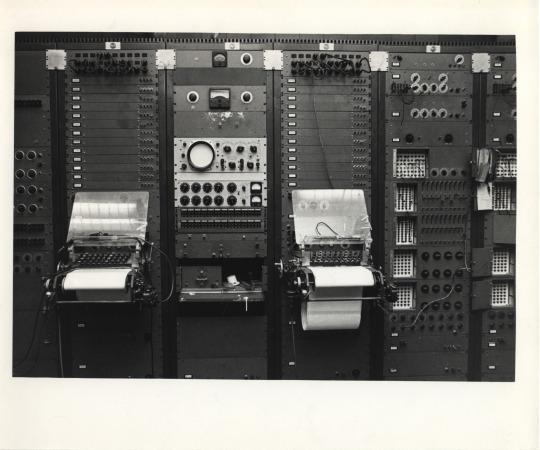

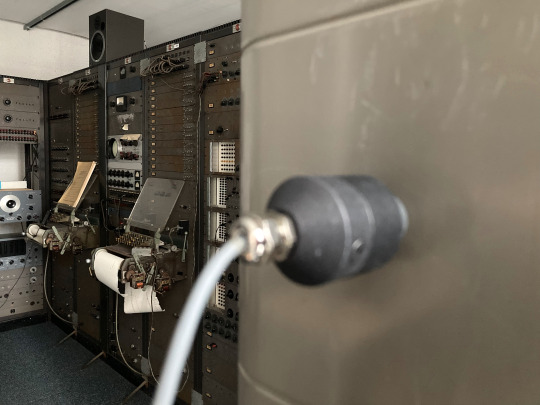

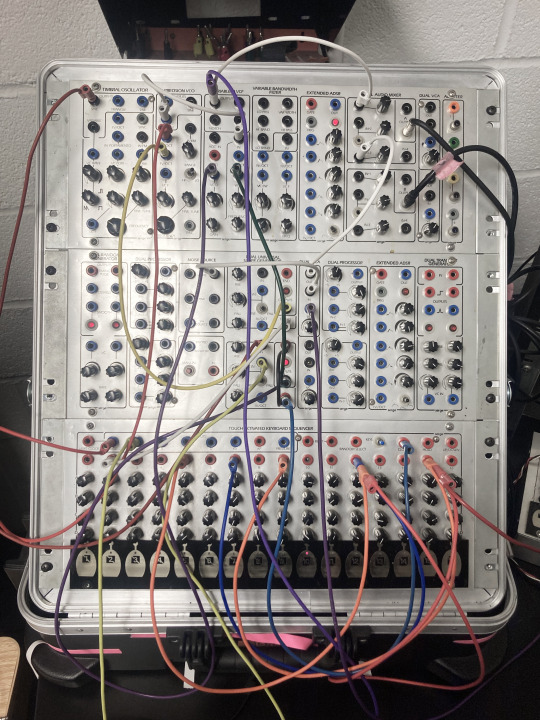
STATE MUSIC — COMPUTER MUSIC CENTER AT COLUMBIA UNIVERSITY
I spent five weeks in NYC between March and April 2023. It was a fantastic opportunity to work at the Computer Music Center in New York. The CMC is the first electronic music studio in the USA and Seth Cluett was kind enough to let me continue my research in the best conditions.
During this stay I was able to compose two new pieces for my forthcoming debut album State Music. The first was recorded in Studio 324 on two very early versions of Buchla and Serge analogue modular systems and two Bode frequency shifters. The process was similar to what I had done at EMS Stockholm, Radio Belgrade, KSYME Athens and Willem Twee Studio in Den Bosch. I tried to adapt to the machines installed in the studio, tested a lot of patches and recorded many hours of textures, accidents and other sonic events using a variety of techniques. The editing, collaging, layering and mixing was done later in my studio. I just followed one rule. Don't use the same recording twice. No loops, nothing like that.
The second composition was recorded in Jace Clayton's office. Why? Because the RCA Mark II, considered one of the first music synthesizers ever, still sits in that room. The synth has been out of order since 1976, when someone broke into the Prentis Hall building and vandalised the machine. But I decided to make use of it anyway. I opened one of the office windows to let sounds from the city into the room and recorded the tiny vibrations caused by street noise with a geophone magnetised to the synthesizer. In this way the synthesiser essentially acted as a loudspeaker. A cheap recorder was placed near the window. Two wide cardioid microphones were placed in the middle of the room for a high quality recording. Most of the time I sit in front of the synthesizer and do nothing but listen, and every now and then I flip a switch, turn a potentiometer or unplug a patch cable to activate the acoustic space of the office and make the metal frame of the machine vibrate.
It was an amazing moment. I've been working on the State Music project since 2018. I realised that being in that room with that silent machine felt like achieving something. My understanding of electronic music history is much deeper. The links between early synthesizers and the military industry are now much clearer to me. State music? Corporate music? I don't know and it doesn't matter.
Here's an anecdote from The Enabling Instrument: Milton Babbitt and the RCA Synthesizer" a paper by Martin Brody.
When the Mark-I appeared in 1955, it was listed in the RCA Acoustics Laboratory inventory with a proud comparison: The synthesiser was 'second only to the Typhoon rocket simulator as the largest single assembly to come out of the David Sarnoff Research Center'. [Although the Mark-I was built to recreate a peaceful expression of human subjectivity rather than to obliterate a hostile and remote man-machine, its input/output components were as indifferent to the workings of the psyche as an anti-aircraft predictor.As Harry Olson recalled, to test their new machine, Olson and Belar followed Seashore's playbook of analysing past performances. The goal was not to expose the musical mind, but to simulate the sounds of acoustic instruments and human performers with the utmost precision.
I would like to thank Seth Cluett, Anna Meadors, Jace Clayton and Nick Patterson for their help.
#large#RCA#STS Serge synthesizer#Buchla 100#RCA Mark II#Victor#Computer music center#Seth Cluett#Martin Brody#Milton Babbit#Vladimir Ussachevsky#Milton Babbitt
5 notes
·
View notes
Text
CWK003 MUSIC & SONGWRITING APPROACHES
WEEKLY REPORT OF MY COMPOSITION
Week 1: Introduction and Song Concept
Introduce the report and explain its purpose.
This report is going to explain the general arrangement of the song and provide an overview of the process:
1. We will break down the song into its components.
2. We will analyze each component's melody, harmony, and rhythm. To will help us understand how they all fit together to create the overall arrangement.
3. We will reflect on the emotional and tonal qualities of the song.
4. We will review our findings and summarize the key takeaways.
This method will give a comprehensive understanding of the song's arrangement. In this way, something always happens, and the song is variable; this helps the structure carry out the ups and downs and build-up of the track itself from its start until it finishes.
Overview of the song's concept,
The composition is a Tech House track mixing with Flamenco/Latin. This song's principal concept is to combine different music styles and create a composition full of energy and groove. reflect how two styles combine and create synergy, which is the intention this composition wants to express.
Disscusing the references
There are a few references which can shape perfectly in this production; One of them is "Tèodoro - La Guitarra (Angelo Ferreri 'TS Exclusive' Mix)" and "Dennis Cruz - La Ratonera feat. P.Rivas, those two tracks can
Week 2: Creating Song Components and Rhythm
Break down the song into its components, including melody, harmony, and rhythm.
The initial point is to start with a rhythm pattern of 5 bars and add kicks, hi-hats, and shakers to get a loop to help work on the bass and melody.
Inside this kick pattern are two; One gives the sub and groove, and the other gets the punch and higher frequencies; there is a low pass filter for the kick sub, which cuts down at 250 Hz with a boost on the fundamental to strengthen the body. Also, the Kick has a high pass filter above 400 Hz, focusing on giving punch and click. In this kind of music, the Kick hits every 1 bar (blacks) in a 4/4 time signature.
For other rhythm instruments, such as hi-hats, shakers, and claps, the idea is the same: mixing different types of sounds and mixing them to get brightness, space and body. Hi-Hats hit against Kick every 1 bar, Shakers in semi-eight notes, and Clap goes in whites; This is the basic rhythm pattern in Tech House Music. Besides, the sounds are panning to the Stereo answering between them. All those components are stacked in a group with more than one sound; the idea is to mix different instruments and create texture. On the other hand, two drum-top house samples help strengthen the beat by adding percussive elements and brightness.
Regarding the percussion sounds, the idea is to transmit the Latin style with instruments such as clave and bongo. The clave gives a pattern typical of Cuban Son. Furthermore, the bongos create groove giving a tropical arrangement to the track. On the other hand, the production has an analogue Cajon recorded to strengthen the Flamenco aspect.
Once the initial loop is ready, it is time to extend the song and work out with bass and harmonies.
Week 3: Bass, Harmonies, and Instruments. Intention and Development
The bass plays the fundamental key and fills the space between when the Kick punches; it Is a simple pattern but very effective, which gives power to the track and allows other instruments to build up melodies on top.
This song is in A Phrygian, a standard key in Flamenco. The harmonies want to get a flamenco atmosphere along the notes of this scale.
The Synth plays a repetitive pattern keeping the tech feel, and the Guitars play an essential role in the song's main melody. The guitar's introduction to the beat tries to tell a history throughout the whole song and gives tension between ups and downs.
A diminished chord stab gives a flamenco personality to the beat, which is present in the main melody. Other stabs combine the electronic with the organic to mix different styles.
All the Synths and Guitars are interpretations made by MIDI, and the references to get these arrangements in some popular flamenco songs and the study of this genre. Synths play a role focus on electronic music.
Week 4: Leading Voice, Samples, and Production Techniques Arrangements
The leading voice gives the sense to the entire song; it tells the history of what is happening and for what; it was the last component to add. However, all the instrumentation is running according to the voice. Besides, it is modified in pitch regarding the key signature and put on time in order of appearance throughout the song every four bars.
From the prominent voice, a few fragments are playing as samples; this arrangement wants to give creativity to the track, creating a sequence whereby the voices answer between them and creating continuity along the track.
Besides, there is another sample that is playing as a pad ambience; the way to convert it is by cutting a scream from the beginning and the end of the clip and, with the help of a crossfader, linking the same snippet in a loop to do an ambience constant which can generate progression in certain moments of the song.
Week 5: The Mixing and the Arrangements inside of it including FX and Automation
The production aims to get a sound solid and groove; this is the principal intention of getting back on the track references. The emulation of organic instruments such as the guitar or voice is the other two pillars that give a sense to the track.
Also, the sample voices keep a background where the production takes the audience toward the flamenco harmonies, which go hand in hand with helping the electronic sounds.
The mix wants to transmit intelligibility to each sound and create a balance between high and bass, supported by melodies in the middle-frequency range plus high sounds supporting brightness. On the other hand, the bass has an overdrive to saturate harmonics to deliver more colour in the mix.
The composition has to be of 3 minutes; therefore, there is not possible to run a regular time for this genre, so the way to do it is by making a short demo with one downbeat; that is our structure where every 1 bar, a new sound starts to run in a way to keep something happening all the time into the song.
As it sounds in the references, everything goes through compression; vocals, bass and claps panned to the centre and highs synths and ambiences open to the stereo image completing each other.
It is essential to highlight that the bass needs to breathe by doing a soft compression. The intention is to punch and creates movement in the lower frequencies. Separately each synth-included guitars have an EQ up to its fundamental and removes or adds what harmonics are engaging in each situation, offering space and colour in the mix.
The production aims to get a sound solid and groove; this is the principal intention of getting back on the track references. The emulation of organic instruments such as the guitar or voice is the other two pillars that give a sense to the track.
Also, the sample voices keep a background where the production takes the audience toward the flamenco harmonies, which goes hand in hand with helping the electronic sounds to get a combination of booth styles.
The Automation wants to support the entire song making sounds evolve, especially on the downbeat. One way to do it is by increasing the cutoff and resonance in one of the Synths to thrill the song when the groove starts; the Automation's behaviour runs every 8 bars and when the downbeat reaches almost the end.
Synth's Automation travels along the beat like a trip to keep the audience entertained and avoid repetitive patterns. Also, one Synth sample plays with the EQ as a filter, opening the high frequencies and boosting around 800 Hz/1000 kHz to the Stereo.
Besides, Reverb is also with Automation, exciting the harmonics and creating tension.
The references present all these conclusions and are the template for building up this composition. Using different sounds that follow the same emotional proposes when they play. Also, this track seeks the idea of transmitting character and own style inside the way to create this kind of music.
The whole song wants to place the audience in an electronic dancing and instrumental mood for a nightclub or day event out door; that is the main idea of this composition, and also to possibly appreciate the fusion of electronic and classic contemporary sounds.
Overview and Reflections
The overviews of this process and what I have learnt are fantastic opportunities to understand how Logic Pro X works. All the shortcuts and tools helped me expand my creativity while composing a song; besides, all the knowledge provided in the lectures made me change my concept about composing music getting back on the path I have taken over the years.
Also, I have other conclusions in different procedures and arrangements to learn constantly.
It would always help to have the main ideas, such as EQ, Compression, Mixing, and Mastering; however, there is no right or wrong way in music but different paths to follow and get conclusions about them.
Each week, there is a provide detailed explanations and insights about the specific aspects mentioned in the report.
1 note
·
View note
Text
HEAR: Electronic Dance | SBTRKT - “L.F.O.”
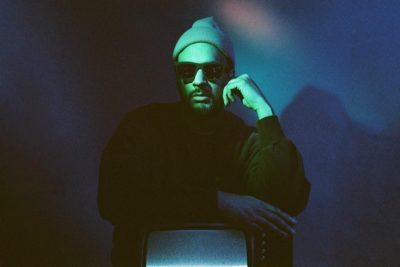
PRE-SAVE/ORDER: https://sbtrkt.ffm.to/theratroad Revered artist and prolific collaborator SBTRKT shares the brand new single “L.F.O.” featuring Sampha and George Riley, unveiling more of the hotly anticipated forthcoming album The Rat Road, set for release on the 5th of May via AWAL. “L.F.O.” sees SBTRKT enlist the help of longstanding collaborator Sampha and the burgeoning R&B polymath George Riley. The duo’s vocal contributions are layered atop metamorphic synthesisers and sporadic injections of intricate drumwork, the latest single is an undeniable full-circle moment as SBTRKT unites with Sampha for the first time in seven years. “L.F.O.” deftly follows the release of the hypnagogic single "Days Go By" featuring Toro y Moi, "Waiting" with Teezo Touchdown and “FORWARD” ft. LEILAH, whichwas first previewed in the video for Drake and 21 Savage's "Jimmy Cooks" music video. SBTRKT speaks on the single: “L.F.O. began with me messing around with an analogue synth about 6 years ago - the track title stuck (L.F.O. - Low Frequency Oscillator demo 1). The opening chords became my breakthrough moment, which captured that feeling when chords and melodies feel like they float. Sampha dropped by my studio around 2018 - was excited by the sonic palette of it and so we laid down some vocal ideas. Over the time since, I have probably past 70 different versions of this song! Late 2022, I got in touch with George Riley after following her music and the rest started to drop into place! Sometimes songs take 5 minutes and some 5 years to find the right components! Much love to Sampha for getting involved and being a constant through all my albums - over more than a decade on from our first work together - and to George Riley for being up for experimenting and creating music that doesn't have to fit any rules. Sometimes the pieces find their way together and make sense texturally without forcing a concept on it.” Instead of focusing on “bigger streaming and stat-building collaborations," SBTRKT has looked for interesting and new talents from across the UK and U.S. in a way that can only make sense through a SBTRKT lens. The album wears its emotions openly as SBTRKT takes the listener on a journey through euphoria and melancholia. In the same minute, footwork is melded into four-to-floor techno while screeching electronics and synth-heavy production are reminiscent of his early work. Mutant garage lives alongside pop-leaning future-synth production adding new colors to SBTRKT’S palette while taut, wiry slices pop and fizz with menacing energy in his distinct mode of expression. The Rat Road is a true marriage of genres with SBTRKT’s febrile presence felt throughout, prioritizing intention and purpose over spectacle. Read the full article
0 notes
Text
HEAR: Electronic Dance | SBTRKT - “L.F.O.”
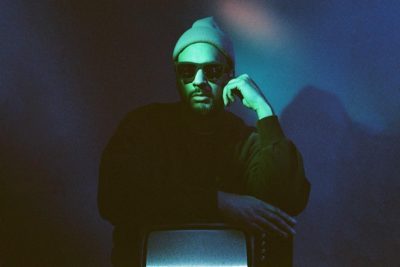
PRE-SAVE/ORDER: https://sbtrkt.ffm.to/theratroad Revered artist and prolific collaborator SBTRKT shares the brand new single “L.F.O.” featuring Sampha and George Riley, unveiling more of the hotly anticipated forthcoming album The Rat Road, set for release on the 5th of May via AWAL. “L.F.O.” sees SBTRKT enlist the help of longstanding collaborator Sampha and the burgeoning R&B polymath George Riley. The duo’s vocal contributions are layered atop metamorphic synthesisers and sporadic injections of intricate drumwork, the latest single is an undeniable full-circle moment as SBTRKT unites with Sampha for the first time in seven years. “L.F.O.” deftly follows the release of the hypnagogic single "Days Go By" featuring Toro y Moi, "Waiting" with Teezo Touchdown and “FORWARD” ft. LEILAH, whichwas first previewed in the video for Drake and 21 Savage's "Jimmy Cooks" music video. SBTRKT speaks on the single: “L.F.O. began with me messing around with an analogue synth about 6 years ago - the track title stuck (L.F.O. - Low Frequency Oscillator demo 1). The opening chords became my breakthrough moment, which captured that feeling when chords and melodies feel like they float. Sampha dropped by my studio around 2018 - was excited by the sonic palette of it and so we laid down some vocal ideas. Over the time since, I have probably past 70 different versions of this song! Late 2022, I got in touch with George Riley after following her music and the rest started to drop into place! Sometimes songs take 5 minutes and some 5 years to find the right components! Much love to Sampha for getting involved and being a constant through all my albums - over more than a decade on from our first work together - and to George Riley for being up for experimenting and creating music that doesn't have to fit any rules. Sometimes the pieces find their way together and make sense texturally without forcing a concept on it.” Instead of focusing on “bigger streaming and stat-building collaborations," SBTRKT has looked for interesting and new talents from across the UK and U.S. in a way that can only make sense through a SBTRKT lens. The album wears its emotions openly as SBTRKT takes the listener on a journey through euphoria and melancholia. In the same minute, footwork is melded into four-to-floor techno while screeching electronics and synth-heavy production are reminiscent of his early work. Mutant garage lives alongside pop-leaning future-synth production adding new colors to SBTRKT’S palette while taut, wiry slices pop and fizz with menacing energy in his distinct mode of expression. The Rat Road is a true marriage of genres with SBTRKT’s febrile presence felt throughout, prioritizing intention and purpose over spectacle. Read the full article
0 notes
Text
wait sorry im still on this shit swan lake breakbeat in the space monte cristo anime is such an inspired choice i need to hueylewisandthenews a little about it
1:50 the hit with syncing with the orchestral line is nuts 2:20 has a great synth keyboard chord line 2:50 and im honestly just a sucker for music that goes between electronic and analogue like this so the bits of the raw original ballet piece is great for the textural switch up 4:30 another good synth layer :) 5:40 ish they start layering the raw ballet samples over the drums and such in this like super discordant way thats a really good build up into 6:20 the craziest hook of 1877!!!!!!!!!!!!!!!!!! i love ending off the drum line like that into the original orchestral piece right at part of swan lake that makes you go

man im listening to the gankutsuou ost since its been years and i forgot about this track. space alien giant mecha robot battles count of monte cristo. WITH jungle!!!!!!!!!!!!!!!!!!!!!!!!!!!!!!!!!
youtube
#i have to call this hueylewisandthenewsing because if i called it americanpsychoing people would get concerned#i cant call it paulallenaxemurdering either. but i dont know what else to call it LOL#also sorry to sound like your very white very tryhard classical music teacher but the thing is swan lake does go crazy#edit: oh shit apparently the swan lake theme was used in the 30s dracula adaptation. that is probably why its in space vampire monte cristo#i just thought it was because swan lake goes hard but thats really neat!#(guy who is reading swan lake wikipedia pages instead of doing her homework)
3 notes
·
View notes
Audio
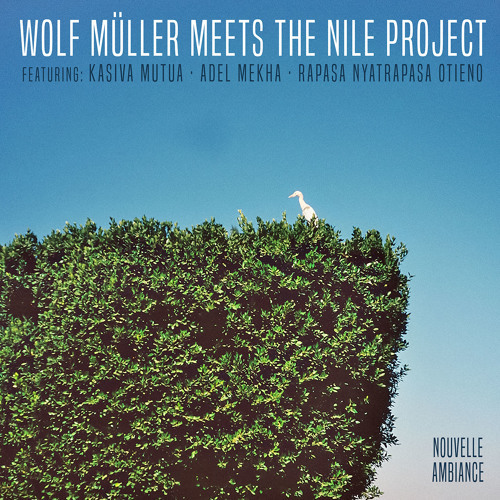
Wolf Müller - Mabomba Dance (Long Version) from: Wolf Müller Meets The Nile Project Feat. Kasiva Mutua, Adel Mekha, Rapasa Nyatrapasa Otieno (Nouvelle Ambiance, 2019)
Hypnotic percussion, Nyatiti experiments and Nubian vocal traditions combine with drum machines and analogue synth textures for a dancefloor meeting in the shadow of the Aswan Dam.
Recorded in Aswan, Egypt in January 2016 as a part of The Nile Project gathering.
#2010s#wolf müller#jan schulte#kasiva mutua#adel mekha#rapasa nyatrapasa otieno#electronic#tribal#tribal house#afro#afro cosmic#percussion#hypnotic percussion#analogue synth textures#nouvelle ambiance#2019#egypt#nile project
5 notes
·
View notes
Photo
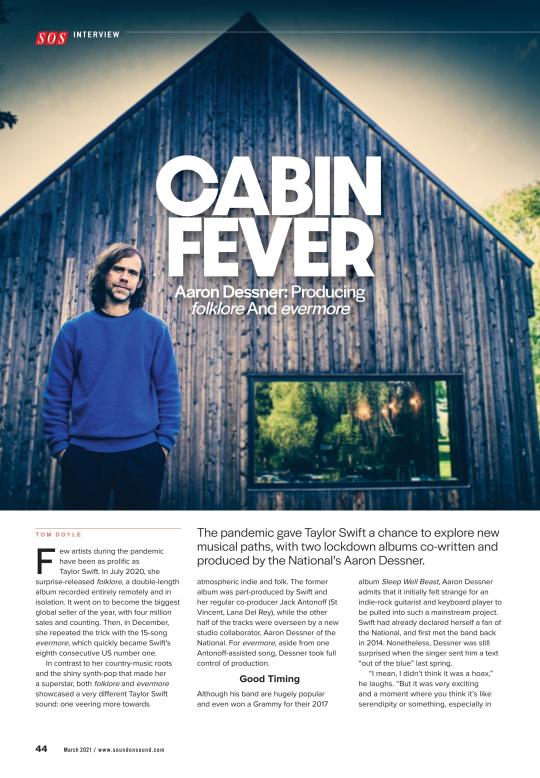
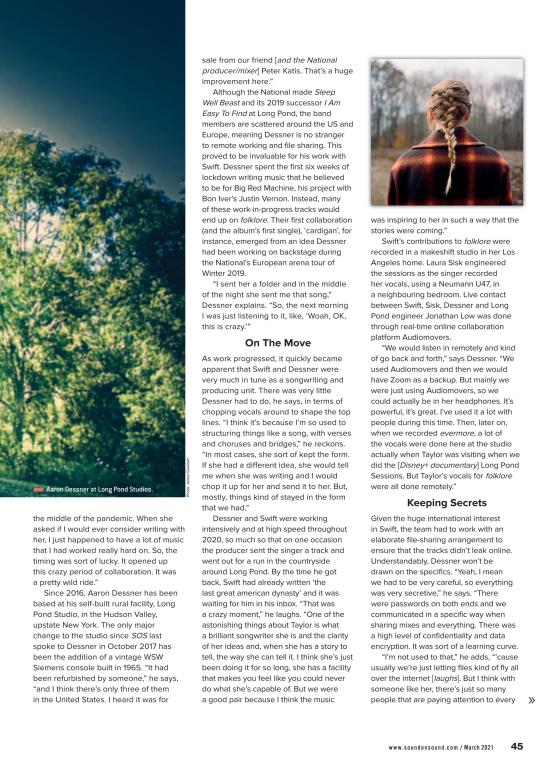
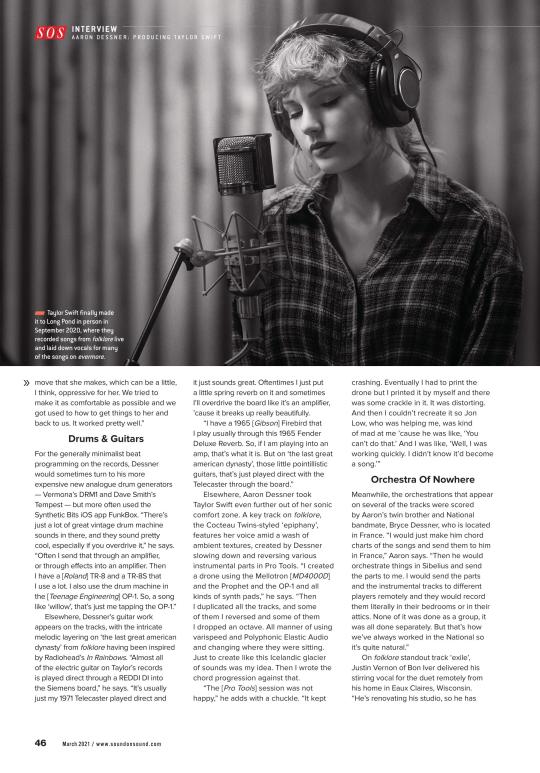
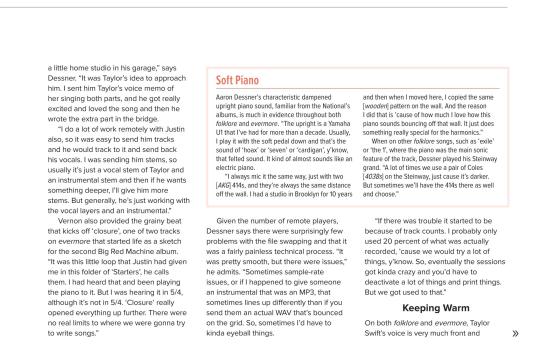



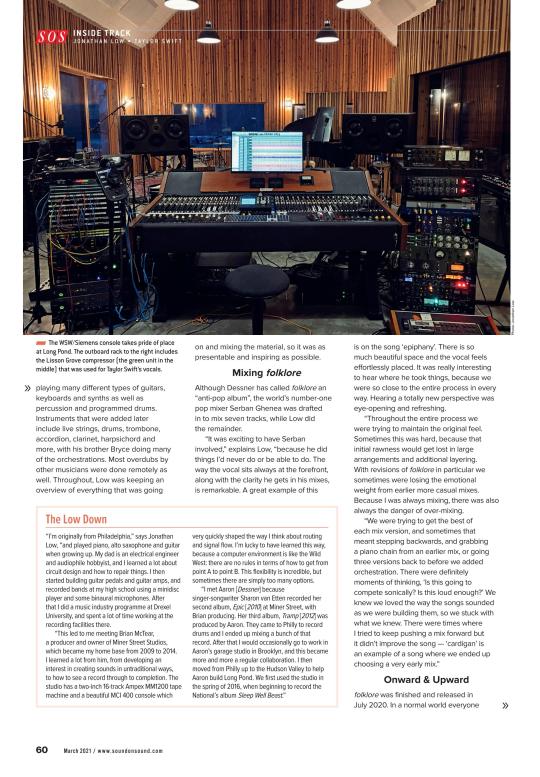


CABIN FEVER - Aaron Dessner: Producing folklore and evermore
Sound On Sound Magazine // March 2021 issue // By Tom Doyle
The pandemic gave Taylor Swift a chance to explore new musical paths, with two lockdown albums co-written and produced by the National's Aaron Dessner.
Few artists during the pandemic have been as prolific as Taylor Swift. In July 2020, she surprise-released folklore, a double-length album recorded entirely remotely and in isolation. It went on to become the biggest global seller of the year, with four million sales and counting. Then, in December, she repeated the trick with the 15-song evermore, which quickly became Swift's eighth consecutive US number one.
In contrast to her country-music roots and the shiny synth-pop that made her a superstar, both folklore and evermore showcased a very different Taylor Swift sound: one veering more towards atmospheric indie and folk. The former album was part-produced by Swift and her regular co-producer Jack Antonoff (St Vincent, Lana Del Rey), while the other half of the tracks were overseen by a new studio collaborator, Aaron Dessner of the National. For evermore, aside from one Antonoff-assisted song, Dessner took full control of production.
Good Timing
Although his band are hugely popular and even won a Grammy for their 2017 album Sleep Well Beast, Aaron Dessner admits that it initially felt strange for an indie-rock guitarist and keyboard player to be pulled into such a mainstream project. Swift had already declared herself a fan of the National, and first met the band back in 2014. Nonetheless, Dessner was still surprised when the singer sent him a text "out of the blue" last spring. "I mean, I didn't think it was a hoax," he laughs. "But it was very exciting and a moment where you think it's like serendipity or something, especially in the middle of the pandemic. When she asked if I would ever consider writing with her, I just happened to have a lot of music that I had worked really hard on. So, the timing was sort of lucky. It opened up this crazy period of collaboration. It was a pretty wild ride."
Since 2016, Aaron Dessner has been based at his self-built rural facility, Long Pond Studio, in the Hudson Valley, upstate New York. The only major change to the studio since SOS last spoke to Dessner in October 2017 has been the addition of a vintage WSW Siemens console built in 1965. "It had been refurbished by someone," he says, "and I think there's only three of them in the United States. I heard it was for sale from our friend [and the National producer/mixer] Peter Katis. That's a huge improvement here."
Although the National made Sleep Well Beast and its 2019 successor I Am Easy To Find at Long Pond, the band members are scattered around the US and Europe, meaning Dessner is no stranger to remote working and file sharing. This proved to be invaluable for his work with Swift. Dessner spent the first six weeks of lockdown writing music that he believed to be for Big Red Machine, his project with Bon Iver's Justin Vernon. Instead, many of these work-in-progress tracks would end up on folklore. Their first collaboration (and the album's first single), 'cardigan', for instance, emerged from an idea Dessner had been working on backstage during the National's European arena tour of Winter 2019.
"I sent her a folder and in the middle of the night she sent me that song," Dessner explains. "So, the next morning I was just listening to it, like, `Woah, OK, this is crazy."
On The Move
As work progressed, it quickly became apparent that Swift and Dessner were very much in tune as a songwriting and producing unit. There was very little Dessner had to do, he says, in terms of chopping vocals around to shape the top lines. "I think it's because I'm so used to structuring things like a song, with verses and choruses and bridges," he reckons. "In most cases, she sort of kept the form. If she had a different idea, she would tell me when she was writing and I would chop it up for her and send it to her. But, mostly, things kind of stayed in the form that we had."
Dessner and Swift were working intensively and at high speed throughout 2020, so much so that on one occasion the producer sent the singer a track and went out for a run in the countryside around Long Pond. By the time he got back, Swift had already written 'the last great american dynasty' and it was waiting for him in his inbox. "That was a crazy moment," he laughs. "One of the astonishing things about Taylor is what a brilliant songwriter she is and the clarity of her ideas and, when she has a story to tell, the way she can tell it. I think she's just been doing it for so long, she has a facility that makes you feel like you could never do what she's capable of. But we were a good pair because I think the music was inspiring to her in such a way that the stories were coming."
Swift's contributions to folklore were recorded in a makeshift studio in her Los Angeles home. Laura Sisk engineered the sessions as the singer recorded her vocals, using a Neumann U47, in a neighbouring bedroom. Live contact between Swift, Sisk, Dessner and Long Pond engineer Jonathan Low was done through real-time online collaboration platform Audiomovers.
"We would listen in remotely and kind of go back and forth," says Dessner. "We used Audiomovers and then we would have Zoom as a backup. But mainly we were just using Audiomovers, so we could actually be in her headphones. It's powerful, it's great. I've used it a lot with people during this time. Then, later on, when we recorded evermore, a lot of the vocals were done here at the studio actually when Taylor was visiting when we did the [Disney+ documentary] Long Pond Sessions. But Taylor's vocals for folklore were all done remotely."
Keeping Secrets
Given the huge international interest in Swift, the team had to work with an elaborate file-sharing arrangement to ensure that the tracks didn't leak online. Understandably, Dessner won't be drawn on the specifics. "Yeah, I mean we had to be very careful, so everything was very secretive," he says. "There were passwords on both ends and we communicated in a specific way when sharing mixes and everything. There was a high level of confidentiality and data encryption. It was sort of a learning curve.
"I'm not used to that," he adds, "'cause usually we're just letting files kind of fly all over the Internet [laughs]. But I think with someone like her, there's just so many people that are paying attention to every move that she makes, which can be a little, I think, oppressive for her. We tried to make it as comfortable as possible and we got used to how to get things to her and back to us. It worked pretty well."
Drums & Guitars
For the generally minimalist beat programming on the records, Dessner would sometimes turn to his more expensive new analogue drum generators - Vermona's DRM1 and Dave Smith's Tempest - but more often used the Synthetic Bits iOS app FunkBox. "There's just a lot of great vintage drum machine sounds in there, and they sound pretty cool, especially if you overdrive it," he says. "Often I send that through an amplifier, or through effects into an amplifier. Then I have a [Roland) TR-8 and a TR-8S that I use a lot. I also use the drum machine in the [Teenage Engineering] OP-1. So, a song like 'willow', that's just me tapping the OP-1."
Elsewhere, Dessner's guitar work appears on the tracks, with the intricate melodic layering on 'the last great american dynasty' from folklore having been inspired by Radiohead's In Rainbows. "Almost all of the electric guitar on Taylor's records is played direct through a REDDI DI into the Siemens board," he says. "It's usually just my 1971 Telecaster played direct and it just sounds great. Oftentimes I just put a little spring reverb on it and sometimes I'll overdrive the board like it's an amplifier, 'cause it breaks up really beautifully.
"I have a 1965 [Gibson] Firebird that I play usually through this 1965 Fender Deluxe Reverb. So, if I am playing into an amp, that's what it is. But on 'the last great american dynasty', those little pointillistic guitars, that's just played direct with the Telecaster through the board."
Elsewhere, Aaron Dessner took Taylor Swift even further out of her sonic comfort zone. A key track on folklore, the Cocteau Twins-styled 'epiphany', features her voice amid a wash of ambient textures, created by Dessner slowing down and reversing various instrumental parts in Pro Tools. "I created a drone using the Mellotron [MD4000D] and the Prophet and the OP-1 and all kinds of synth pads," he says. "Then I duplicated all the tracks, and some of them I reversed and some of them I dropped an octave. All manner of using varispeed and Polyphonic Elastic Audio and changing where they were sitting. Just to create like this Icelandic glacier of sounds was my idea. Then I wrote the chord progression against that.
"The [Pro Tools] session was not happy," he adds with a chuckle. "It kept crashing. Eventually I had to print the drone but I printed it by myself and there was some crackle in it. It was distorting. And then I couldn't recreate it so Jon Low, who was helping me, was kind of mad at me 'cause he was like, 'You can't do that.' And I was like, 'Well, I was working quickly. I didn't know it'd become a song."
Orchestra Of Nowhere
Meanwhile, the orchestrations that appear on several of the tracks were scored by Aaron's twin brother and National bandmate, Bryce Dessner, who is located in France. "I would just make him chord charts of the songs and send them to him in France," Aaron says. "Then he would orchestrate things in Sibelius and send the parts to me. I would send the parts and the instrumental tracks to different players remotely and they would record them literally in their bedrooms or in their attics. None of it was done as a group, it was all done separately. But that's how we've always worked in the National so it's quite natural."
On folklore standout track 'exile', Justin Vernon of Bon Iver delivered his stirring vocal for the duet remotely from his home in Eaux Claires, Wisconsin. "He's renovating his studio, so he has a little home studio in his garage," says Dessner. "It was Taylor's idea to approach him. I sent him Taylor's voice memo of her singing both parts, and he got really excited and loved the song and then he wrote the extra part in the bridge.
"I do a lot of work remotely with Justin also, so it was easy to send him tracks and he would track to it and send back his vocals. I was sending him stems, so usually it's just a vocal stem of Taylor and an instrumental stem and then if he wants something deeper, I'll give him more stems. But generally, he's just working with the vocal layers and an instrumental."
Vernon also provided the grainy beat that kicks off 'closure', one of two tracks on evermore that started life as a sketch for the second Big Red Machine album. "It was this little loop that Justin had given me in this folder of 'Starters', he calls them. I had heard that and been playing the piano to it. But I was hearing it in 5/4, although it's not in 5/4. 'Closure' really opened everything up further. There were no real limits to where we were gonna try to write songs."
Given the number of remote players, Dessner says there were surprisingly few problems with the file swapping and that it was a fairly painless technical process. "It was pretty smooth, but there were issues," he admits. "Sometimes sample-rate issues, or if I happened to give someone an instrumental that was an MP3, that sometimes lines up differently than if you send them an actual WAV that's bounced on the grid. So, sometimes I'd have to kinda eyeball things.
"If there was trouble it started to be because of track counts. I probably only used 20 percent of what was actually recorded, 'cause we would try a lot of things, y'know. So, eventually the sessions got kinda crazy and you'd have to deactivate a lot of things and print things. But we got used to that."
Soft Piano
Aaron Dessner's characteristic dampened upright piano sound, familiar from the National's albums, is much in evidence throughout both folklore and evermore. "The upright is a Yamaha U1 that I've had for more than a decade. Usually, I play it with the soft pedal down and that's the sound of 'hoax' or 'seven' or 'cardigan', y'know, that felted sound. It kind of almost sounds like an electric piano.
"I always mic it the same way, just with two [AKG] 414s, and they're always the same distance off the wall. I had a studio in Brooklyn for 10 years and then when I moved here, I copied the same [wooden] pattern on the wall. And the reason I did that is 'cause of how much I love how this piano sounds bouncing off that wall. It just does something really special for the harmonics."
When on other folklore songs, such as 'exile' or 'the 1', where the piano was the main sonic feature of the track, Dessner played his Steinway grand. "A lot of times we use a pair of Coles [4038s] on the Steinway, just cause it's darker. But sometimes we'll have the 414s there as well and choose."
Keeping Warm
On both folklore and evermore, Taylor Swift's voice is very much front and center and high in the mix, and generally sounds fairly dry. "I think the main thing was I wanted her vocals to have a more full range than maybe you typically hear," Dessner explains. "'Cause I think a lot of the more pop-oriented records are mixed a certain way and they take some of the warmth out of the vocal, so that it's very bright and it kinda cuts really well on the radio. But she has this wonderful lower warmth frequency in her voice which is particularly important on a song like `seven'. If you carved out that mud, y'know, it wouldn't hit you the same way. Or, like, `cardigan', I think it needs that warmth, the kind of fuller feeling to it. It makes it darker, but to me that's where a lot of emotion is."
Effects-wise, almost all of the treatments were done in the box. "There's no outboard reverbs printed," says Dessner. "The only things that we did print would be like an [Eventide] H3000 or sometimes the [WEM] CopiCat tape delay for just a really subtle slap. But generally, it's just different reverbs in the box that Jon was using. He uses the Valhalla stuff quite a bit and some other UAD reverbs, like the [Capitol] Chambers. I often just use Valhalla VintageVerb and the [Avid] Black Spring and simple things."
In some instances, the final mix ended up being the never-bettered rough mix, while other songs took far more work. "'cardigan' is basically the rough, as is `seven'. So, like the early, early mixes, when we didn't even know we were mixing, we never were able to make it better. Like if you make it sound 'good', it might not be as good 'cause it loses some of its weird magic, y'know. But songs like `the last great american dynasty' or 'mad woman', those songs were a little harder to create the dynamics the way you want them, and the pay-off without going too far, and with also just keeping in the kind of aesthetic that we were in. Those were harder, I would say.
"On evermore, I would say 'willow' was probably the hardest one to finish just because there were so many ways it could've gone. Eventually we settled back almost to the point where it began. So, there's a lot of stuff that was left out of 'willow', just because the simplicity of the idea I think was in a way the strongest."
The subject of this month's Inside Track article, 'willow' was the first song written for evermore, immediately following the release of folklore. "It almost felt like a dare or something," Dessner laughs. "We were writing, recording and mixing all in one kind of work stream and we went from one record to the other almost immediately. We were just sort off to the races. We didn't really ever stop since April."
Rubber & Vinyl
Sometimes, Dessner and Swift drew inspiration from unlikely sources; `no body, no crime', for instance, started when he gave her a 'rubber bridge' guitar made by Reuben Cox of the Old Style Guitar Shop in LA. "He's my very old friend," says Dessner of Cox. "He buys undervalued vintage guitars. Stuff that was made in the '50s and '60s as sort of learner guitars, like old Silvertones and Kays and Harmonys. These kinds of guitars which now are quite special, but they're still not valued the same way that vintage Fenders or Gibsons are valued. Then, he customizes them.
"Recently he started retrofitting these guitars with a rubber bridge and flatwound strings. He'll take, like, an acoustic Silvertone from 1958 and put a bridge on it that's covered in this kind of rubber that deadens the strings, so it really has this kind of dead thrum to it. And he puts two pickups in there, one that's more distorted and one that's cleaner. They're just incredible guitars. I thought Taylor would enjoy having one 'cause she loves the sound. So, I had Reuben make one for her and she used it to write `no body, no crime'."
Another friend of Dessner's, Ryan Olsen, has developed a piece of software called the Allovers Hi-Hat Generator which helped create the unusual harmonic loops that feature on `marjorie'. "It's not available on the market," Dessner says of the software. "It's just something that he uses personally, but I think hopefully eventually it'll come out. I wouldn't say it's artificial intelligence software but there's something very intelligent about it [laughs]. It basically analyses audio information and is able to separate audio into identifiable samples and then put them into a database. You then can design parameters for it to spit out sequences that are incredibly musical.
"When Ryan comes here, he'll just take all kinds of things that I give him and run it through there and then it'll spit out, like, three hours of stuff. Then I go through it and find the layers that I love, then I loop them. You can hear it also on the song 'happiness', the drumming in the background. It's not actually played. That's drums that have been sampled and then re-analyzed and re-sequenced out of this Allovers Hi-Hat Generator."
The song `marjorie' is named after Swift's opera-singer grandmother and so, fittingly, her voice can be heard flitting in and out of the mix at the end of the track. "Taylor's family gave us a bunch of recordings of her grandmother," Dessner explains. "But they were from old, very scratchy, noisy vinyl. So, we had to denoise it all using [iZotope's] RX and then I went in and I found some parts that I thought might work. I pitch-shifted them into the key and then placed them. It took a while to find the right ones, but it's really beautiful to be able to hear her. It's just an incredibly special thing, I think."
Meet At The Pond
Taylor Swift finally managed to get together with Aaron Dessner and Jack Antonoff in September 2020 for the filming of folklore: the long pond studio sessions, featuring the trio live-performing the album. It also provided an opportunity for Swift to add her vocals to some of the evermore tracks.
"It did allow us to have more fun, I think," says Dessner. "Y'know, drink more wine and just kinda be in the same place and have the feeling of blasting the music here and dancing around and just enjoying ourselves. She's really a lovely person to hang out with, so in that sense I'm glad that we had that chance to work together in person.
"We were using a [Telefunken] U47 to record Taylor here," he adds. "Either we were using one of the Siemens preamps on the board, which are amazing. Or I have Neve 1064s [preamps/EQs] and we use a Lisson Grove [AR-i] tube compressor generally."
One entirely new song, `tis the damn season', came out of this face-to-face approach, which Swift wrote in the middle of the night after the team had stayed up late drinking. "We had a bunch of wine actually," Dessner laughs, "and then everybody went to sleep, I thought. But I think she must have had this idea swimming around in her head, 'cause the next morning when she arrived, she sang 'Us the damn season' for me in my kitchen. It's maybe my favourite song we've written together. Then she sang it at dinner for me and my wife Stine and we were all crying. It’s just that kind of a song, so it was quite special.”
National Unity
One key track on evermore, 'coney island', features all of the members of the National and sees Swift duetting with their singer Matt Berninger. "My brother [Bryce] actually originated that song," says Aaron Dessner. "I sent him a reference at one point - I can't remember what it was - and then he was sort of inspired to write that chord progression. Then we worked together to sort of develop it and I wrote a bunch of parts and we structured it.
"Taylor and William Bowery [the songwriting pseudonym of Swift's boyfriend, actor Joe Alwyn] wrote 'coney island' and she sang a beautiful version. It felt kind of done, actually. But then I think we all collectively thought, Taylor and myself and Bryce, like this was the closest to a National song."
Dessner then asked the brothers who make up the National's rhythm section, drummer Bryan and bassist Scott Devendorf, to play on 'coney island'. Matt Berninger, as he often does with the band's own tracks, recorded his vocal at home in Los Angeles. "It was never in the same place, it was done remotely," says Dessner, "except Bryan was here at Long Pond when he played. It was great to collaborate as a band with Taylor."
No Compromise
folklore and evermore have been both enormous critical and commercial successes for Taylor Swift. Aaron Dessner reckons that making these anti-pop records has freed the singer up for the future. "I think it was very liberating for her," he says. "I think that's the thing that's been probably the biggest change for her has just been being able to make songs without compromise and then release them without the promotional requirements that she's used to from the past. Obviously, it comes at this time when we're all in lockdown and nobody can tour or go on talk shows or anything. But I think for her probably it will impact what she does in the future.
"But I also think she can shapeshift again," he concludes. "Who knows where she'll go? She's had many celebrated albums from the past, but to release two albums of this quality in such a short time, it really did shine a light on her songwriting talent and her storytelling ability and also just her willingness to experiment and collaborate. Somehow, I ended up in the middle of all that and I'm very grateful."
INSIDE TRACK - Jonathan Low: Secrets of the Mix Engineers
Sound On Sound Magazine // March 2021 issue // By Paul Tingen
From sketches to final mixes, engineer Jonathan Low spent 2020 overseeing Taylor Swift’s hit lockdown albums folklore and evermore.
“I think the theme of a lot of my work nowadays, and especially with these two records, is that everything is getting mixed all the time. I always try to get the songs to sound as finalised as they can be. Obviously that’s hard when you’re not sure yet what all the elements will be. Tracks morph all the time, and yet everything is always moving forwards towards completion in some way. Everything should sound fun and inspiring to listen to all the time.”
Speaking is Jonathan Low, and the two records he refers to are, of course, Taylor Swift’s 2020 albums folklore and evermore, both of which reached number one in the UK and the US. Swift’s main producer and co‑writer on the two albums was the National’s Aaron Dessner, also interviewed in this issue. Low is the engineer, mixer and general right‑hand man at Long Pond Studios in upstate New York, where he and Dessner spent most of 2020 working on folklore and evermore, with Swift in Los Angeles for much of the time.
“In the beginning it did not feel real,” recalls Low. “There was this brand‑new collaboration, and it was amazing how quickly Aaron made these instrumental sketches and Taylor wrote lyrics and melodies to them, which she initially sent to us as iPhone voice memos. During our nightly family dinners in lockdown, Aaron would regularly pull up his phone and say, ‘Listen to this!’ and there would be another voice memo from Taylor with this beautiful song that she had written over a sketch of Aaron’s in a matter of hours. The rate at which it was happening was mind‑blowing. There was constant elevation, inspiration and just wanting to continue the momentum.
“We put her voice memos straight into Pro Tools. They had tons of character, because of the weird phone compression and cutting midrange quality you just would not get when you put someone in front of a pristine recording chain. Plus there was all this bleed. It’s interesting how that dictates the attitude of the vocal and of the song. Even though none of the original voice memos ended up on the albums, they often gave us unexpected hints. These voice memos were such on‑a‑whim things, they were really telling. Taylor had certain phrasings and inflections that we often returned to later on. They became our reference points.”
Pond Life
The making of the National’s 2017 album Sleep Well Beast and the setup at Long Pond were covered in SOS October 2017; today the studio remains pretty much the same, with the exception of a new desk. “The main space is really big, and the console sits in the middle,” says Low. “In 2019, I installed a 1965 WSW/Siemens, which has 24 line‑in and microphone channels and another 24 line channels. WSW is the Austrian branch of Siemens usually built for broadcast. It’s loaded with 811510B channels. The build quality is insane, the switches and pots feel like they were made yesterday. To me it hints at the warm haze of a Class‑A Neve channel but sits further forward in the speakers. The midrange band on the passive EQ is a huge part of its charm, it really does feel like you’re changing the tone of the actual source rather than the recording. Most microphones go through the desk on their way into Pro Tools, though we sometimes use outboard Neve 1064 mic pres. Occasionally I use the Siemens to sum a mix.
“We have a pair of ATC SCM45 monitors, which sound very clear in the large room. The ceiling is very high, and the front wall is about 25 feet behind the monitors. There are diffusers on the sidewalls and the back walls are absorbing, so there are very few reflections. Aaron and I will be listening in tons of different ways. I’ll listen in my home studio with similar ATC SCM20 monitors or on my ‘70s Marantz hi‑fi setup. Aaron is always checking things in his car, and if there’s something that is bugging him, I’ll join him in his car to find out what he hears.”
Low works at Long Pond and with Dessner most of the time, though he does find time to do other projects, among hem this last year the War On Drugs, Waxahatchee and Nap Eyes. When lockdown started in Spring 2020, Low tacked up on supplies and "had a bunch f mixes lined up". Meanwhile, on the Eest Coast, Swift had seen her Lover Fest our cancelled. With help from engineer aura Sisk, she set up a makeshift studio which she dubbed Kitty Committee in bedroom in her Los Angeles home, and began working with long-term producer nd co-writer Jack Antonoff. At the end of April, however, Swift also started working with Dessner, which took the project in different direction. The impressionistic, atmospheric, electro-folk instrumentals Dessner sent her were mostly composed nd recorded by him at Long Pond, assisted by Low.
Sketching Sessions
The instrumental sketches Aaron makes come into being in different ways," elaborates Low. "Sometimes they are more fleshed-out ideas, sometimes they are less formed. But normally Aaron will set himself up in the studio, surrounded by instruments and synths, and he'll construct a track. Once he feels it makes some kind of sense I'll come in and take a listen and then we together develop what's there.
"I don't call his sketches demos, because while many instruments are added and replaced later on, most of the original parts end up in the final version of the song. We end up in the final version of the song. We try to get the sketches to a place where they are already very engaging as instrumental are already very engaging as instrumental tracks. Aaron and I are always obsessively listening, because we constantly want to hear things that feel inspiring and musical, not just a bed of music in the background. It takes longer to create, but in this case also gave Taylor more to latch onto, both emotionally and in terms of musical inspiration. Hearing melodies woven in the music triggered new melodies."
Not long after Dessner and Low sent each sketch to Swift, they would receive her voice memos in return, and they'd load them into the Pro Tools session of the sketch in question. Dessner and Low then continued to develop the songs, in close collaboration with Swift. "Taylor's voice memos often came with suggestions for how to edit the sketches: maybe throw in a bridge somewhere, shorten a section, change the chords or arrangement somewhere, and so on. Aaron would have similar ideas, and he then developed the arrangements, often with his brother Bryce, adding or replacing instruments. This happened fast, and became very interactive between us and Taylor, even though we were working remotely. When we added instruments, we were reacting to the way my rough mixes felt at the very beginning. Of course, it was also dictated by how Taylor wrote and sang to the tracks."
Dessner supplied sketches for nine and produced 10 of folklore's 16 songs, playing many different types of guitars, keyboards and synths as well as percussion and programmed drums. Instruments that were added later include live strings, drums, trombone, accordion, clarinet, harpsichord and more, with his brother Bryce doing many of the orchestrations. Most overdubs by other musicians were done remotely as well. Throughout, Low was keeping an overview of everything that was going on and mixing the material, so it was as presentable and inspiring as possible.
Mixing folklore
Although Dessner has called folklore an "anti-pop album", the world's number-one pop mixer Serban Ghenea was drafted in to mix seven tracks, while Low did the remainder.
"It was exciting to have Serban involved," explains Low, "because he did things I'd never do or be able to do. The way the vocal sits always at the forefront, along with the clarity he gets in his mixes, is remarkable. A great example of this is on the song 'epiphany'. There is so much beautiful space and the vocal feels effortlessly placed. It was really interesting to hear where he took things, because we were so close to the entire process in every way. Hearing a totally new perspective was eye-opening and refreshing.
"Throughout the entire process we were trying to maintain the original feel. Sometimes this was hard, because that initial rawness would get lost in large arrangements and additional layering. With revisions of folklore in particular we sometimes were losing the emotional weight from earlier more casual mixes. Because I was always mixing, there was also always the danger of over-mixing.
"We were trying to get the best of each mix version, and sometimes that meant stepping backwards, and grabbing a piano chain from an earlier mix, or going three versions back to before we added orchestration. There were definitely moments of thinking, 'Is this going to compete sonically? Is this loud enough?' We knew we loved the way the songs sounded as we were building them, so we stuck with what we knew. There were times where I tried to keep pushing a mix forward but it didn't improve the song — 'cardigan' is an example of a song where we ended up choosing a very early mix."
The Low Down
"I'm originally from Philadelphia," says Jonathan Low, "and played piano, alto saxophone and guitar when growing up. My dad is an electrical engineer and audiophile hobbyist, and I learned a lot about circuit design and how to repair things. I then started building guitar pedals and guitar amps, and recorded bands at my high school using a minidisc player and some binaural microphones. After that I did a music industry programme at Drexel University, and spent a lot of time working at the recording facilities there.
"This led to me meeting Brian McTear, a producer and owner of Miner Street Studios, which became my home base from 2009 to 2014. I learned a lot from him, from developing an interest in creating sounds in untraditional ways, to how to see a record through to completion. The studio has a two-inch 16-track Ampex MM1200 tape machine and a beautiful MCI 400 console which very quickly shaped the way I think about routing and signal flow. I'm lucky to have learned this way, because a computer environment is like the Wild West: there are no rules in terms of how to get from point A to point B. This flexibility is incredible, but sometimes there are simply too many options.
"l met Aaron [Dessned] because singer-songwriter Sharon van Etten recorded her second album, Epic [2010] at Miner Street, with Brian producing. Her third album, Tramp [2012] was produced by Aaron. They came to Philly to record drums and I ended up mixing a bunch of that record. After that I would occasionally go to work in Aaron's garage studio in Brooklyn, and this became more and more a regular collaboration. I then moved from Philly up to the Hudson Valley to help Aaron build Long Pond. We first used the studio in the spring of 2016, when beginning to record the National's album Sleep Well Beast."
Onward & Upward
folklore was finished and released in July 2020. In a normal world everyone might have gone on to do other things, but without the option of touring, they simply continued writing songs, with Low holding the fort. In September, many of the musicians who played on the album gathered at Long Pond for the shooting of a making-of documentary, folklore: the long pond studio sessions, which is streamed on Disney+.
The temporary presence of Swift at Long Pond changed the working methods somewhat, as she could work with Dessner in the room, and Low was able record her vocals. After Swift left again, sessions continued until December, when evermore was released, with Dessner producing or co-producing all tracks, apart from 'gold rush' which was co-written and co-produced by Swift and Antonoff. Low recorded many of Swift's vocals for evermore, and mixed the entire album. The lead single 'willow' became the biggest hit from the album, reaching number one in the US and number three in the UK.
"Before Taylor came to Long Pond," remembers Low, "she had always recorded her vocals for folklore remotely in Los Angeles or Nashville. When I recorded, I used a modern Telefunken U47, which is our go-to vocal mic — we record all the National stuff with that — going straight into the Siemens desk, and then into a Lisson Grove AR-1 tube compressor, and via a Burl A-D converter into Pro Tools. Taylor creates and lays down her vocal arrangements very quickly, and it sounds like a finished record in very few takes."
Devils In The Detail
In his mixes, Low wanted listeners to share his own initial response to these vocal performances. "The element that draws me in is always Taylor's vocals. The first time I received files with her properly recorded but premixed vocals I was just floored. They sounded great, even with minimal EQ and compression. They were not the way I'm used to hearing her voice in her pop songs, with the vocal soaring and sitting at the very front edge of the soundscape. In these raw performances, I heard so much more intimacy and interaction with the music. It was wonderful to hear her voice with tons of detail and nuances in place: her phrasing, her tonality, her pitch, all very deliberate. We wanted to maintain that. It's more emotional, and it sounds so much more personal to me. Then there was the music..."
The arrangements on evermore are even more 'chamber pop' than on folklore, with instruments like glockenspiel, crotales, flute, French horn, celeste and harmonium in evidence. "As listeners of the National may know, Aaron's and Bryce's arrangements can be quite dense. They love lush orchestration, all sorts of percussion, synths and other electronic sounds. The challenge was trying to get them to speak, without getting in the way of the vocals. I want a casual listener to be drawn in by the vocal, but sense that something special is happening in the music as well. At the same time, someone who really is digging in can fully immerse themselves and take in all the beauty deeper in the details of the sound and arrangement. Finding the balance between presenting all the musical elements that were happening in the arrangement and this really beautiful, upfront, real-sounding vocal was the ticket."
A particular challenge is that a lot of the detail that Aaron gravitates towards happens in the low mids, which is a very warm part of our hearing spectrum that can quickly become too muddy or too woolly. A lot of the tonal and musical information lives in the low mids, and then the vocal sits more in the midrange and high mids. There's not too much in the higher frequency range, except the top of the guitars, and some elements like a shaker and the higher buzzy parts of the synths. Maintaining clarity and separation in those often complex arrangements was a major challenge."
In & Out The Box
According to Low, the final mix stage for evermore was "very short. There was a moment in the final week or so leading up to the release where the songs were developed far enough for me to sit down and try to make something very cohesive and final, finalising vocal volume, overall volume, and the vibe. There's a point in every mix where the moves get really small. When a volume ride of 0.1dB makes a difference, you're really close to being done. Earlier on, those little adjustments don't really matter.
"I often try to mix at the console, with some outboard on the two-bus, but folklore was mixed all in the box, because we were working so fast, plus initially the plan was for the mixes to be done elsewhere. I ran a couple of mixes for evermore through the console, and `closure' was the only one that stuck. It was summed through the Siemens, with an API 2500 compressor and a Thermionic Culture Phoenix and then back into Pro Tools via the Burl A-D. I will use hardware when mixing in the box, though mainly just two units: the Eventide H3000, because I have not found any plug-ins that do the same thing, and the [Thermionic] Culture Vulture, for its very broad tone shaping and distortion properties.
"The writing and the production happened closely in conjunction with the engineering and mixing, and the arrangements were dense, making many of the sessions super hefty and actually quite messy. Sounds would constantly change roles in the arrangement and sometimes plug-ins would just stack up. So final mixing involved cleaning up the sessions and stemming large groups down."
Across The Rubber Bridge
The Pro Tools mix session of 'willow' has close to 100 tracks, though there's none of the elaborate bussing that's the hallmark of some modern sessions. At the top are six drum machine tracks in green from the Teenage Engineering OP-1, an instrument that was used extensively on the album. Below that are five live percussion tracks (blue), three bass tracks (pink), and an `AUX Drums' programming track. There's a 'rubber bridge' guitar folder and aux, OP-1 synth tracks, piano tracks, 'Dream Machine' (Josh Kaufman's guitar) and E-bow tracks, Yamaha, Sequential Prophet X, Moog and Roland Juno synth tracks, and Strings and Horns aux stem tracks.
"Most of the drum tracks were performed on the OP-1 by Aaron. These are not programmed tracks. Bryan Devendorf, drummer of the National, programmed some beats on a Roland TR-8S. I ran those though the Fender Rumble bass amp, which adds some woofiness, like an acoustic kit room mic. There's an acoustic shaker, and there's an OP-1 backbeat that's subtle in the beginning, and then gets stronger towards the end of the song. I grouped all the drum elements and the bass, and sent those out to a hardware insert with the Culture Vulture, for saturation, so it got louder and more and more harmonically rich. There is this subtle growing and crescendo of intensity of the rhythm section by the end.
"The 'rubber bridge' guitars were the main anchor in the instruments. These guitars have a wooden bridge wrapped in rubber, and sound a bit like a nylon-string guitar, or a light palm mute. They're very percussive and sound best when recorded on our Neumann U47 and a DI. On many of those DI tracks I have a [SPL] Transient Designer to lower the sustain and keep them punchy, especially in the low end. There's a folder with five takes of 'rubber bridge' guitar in this session, creating this wall of unique guitar sound.
"I treated the 'rubber bridge' guitars quite extensively. There's a FabFilter Pro-Q3 cutting some midrange frequencies and some air around 10kHz. These guitars can splash out in the high end and have a boominess that's in the same range as the low end of Taylor's vocal, so I had to keep these things under control. Then I used a SoundToys Tremolator, with a quarter-note tremolo that makes the accents in the playing a bit more apparent. I like to get the acoustic guitars a little bit out of the way for the less important beats, so I have the Massey CT5 compressor side-chained to the kick drum. I also used the UAD Precision K-Stereo to make the guitars a bit wider. The iZotope Ozone Exciter adds some high mids and high-end harmonic saturation sparkly stuff, and the SoundToys EchoBoy delay is automated, with it only coming on in the bridge, where I wanted more ambience."
Growing Pains
"Once we had figured out how to sit the 'rubber bridge' guitars in the mix, the next challenge was to work out the end of the song, after the bridge. Taylor actually goes down an octave with her voice in the last chorus, and at the same time the music continues to push and grow. That meant using a lot of automation and Clip Gain adjustment to make sure the vocal always stayed on top. There also are ambient pianos playing counter-melodies, and balancing the vocals, guitars and pianos was the main focus on this song. We spent a lot of time balancing this, particularly as the track grows towards the end.
"The vocal tracks share many of the same plug-ins and settings. On the main lead vocal track I added the UAD Pultec EQP-1A, with a little bit of a cut in the low end at 30Hz, and a boost at 8kHz, which adds some modern air. The second plug-in is the Oeksound Soothe, which is just touching the vocal, and it helps with any harsh resonance stuff in the high mids, and a little in the lower mids. Next is the UAD 1176AE, and then the FabFilter Pro-Q3, doing some notches at 200Hz, 1kHz, 4kHz and close to 10kHz. I tend to do subtractive EQ on the Q3, and use more analogue-sounding plug-ins, like the Pultec or the Maag, to boost. After that is the FabFilter Pro-DS [de-esser], taking off a couple of decibels, followed by the FabFilter Saturn 2 [saturation processor], on a warm tape setting.
"Below the vocal tracks are three aux effects tracks, for the vocals. 'Long Delay' has a stereo EchoBoy going into an Altiverb with a spring reverb, for effect throws in the choruses. 'Chamber' is the UAD Capitol Chamber, which gives the vocal a nice density and size, without it being a long reverb. The 'Plate' aux is the UAD EMT140, for the longer tail. These two reverbs work in conjunction, with the chamber for the upfront space, determining where the vocal sits in the mix, and the plate more for the depth behind that.
"At the bottom of the session is a two-bus aux, which mimics the way I do the two-bus on the desk. The plug-ins are the UAD Massive Passive EQ, UAD API 2500 compressor, and the UAD Ampex ATR102. Depending on the song, I will choose 15ips or 30ips. In this case it was set to 15ips, half-inch GP9. That has a nice, aggressive, midrange push, and the GP9 bottom end goes that little bit lower. There's also a PSP Vintage Warmer, a Sonnox Oxford Inflator, plus a FabFilter Pro-L2 [limiter]. None of these things are doing very much on their own, but in conjunction give me the interaction I expect from an analogue mix chain."
#Aaron Dessner#bryce dessner#Jonathan Low#the long pond studio sessions#making of#folklore album#evermore album#interview#about taylor#taylor swift#songwriting#producer#evermore era#folklore era#Sound on Sound Magazine#scans
257 notes
·
View notes
Audio
NEW MUSIC!
At the start of 2022 I started making music live on Twitch. This album consists of all the music we made on stream in the first half of the year, featuring warm analogue synths, chill lofi textures, instruments built from Parisian field recordings, and tracks featuring nothing but recordings of my cat. I hope it is the first of many such releases. I was blown away by the love and support I received while I was making these tracks, and the act of composing in public, I think, has made me a better musician and producer.
3 notes
·
View notes
Audio
Hannah Peel & Paraorchestra - The Unfolding - a modern classical suite with electronics; the winds in the orchestra are all woodwinds and the strings are cello and lower, creating a different and quite lovely sound profile
There are pieces of music that seek to tell us deeper stories. Others harness the talents of the players at their disposal in adventurous ways. Then there are the rare, generous works that make us think back to our roots as human beings and to our shared beginnings in the universe, that lift us in their melodies, rhythms and textures, that carry us with them. The Unfolding is all of these things. An extraordinary eight-part collaboration between composer Hannah Peel (Mercury Prize and Emmy nominee) and Paraorchestra, it was made over three years in precious morsels of time around a global pandemic. These circumstances – unexpected when the collaboration began – add weight to its explorations in sound about who we are, where we came from, and who we could all be. The Unfolding also explores Paraorchestra’s progressive idea of what an orchestra should be, mixing analogue, digital and assistive instruments with a unique ensemble of disabled and non-disabled musicians to make magic happen, and accessible to all. Conducted by Charles Hazlewood Vocals - Victoria Oruwari Vocals - Hannah Peel Alto Flute and Flute - Chloe Vincent Recorders - James Risdon Bb Clarinet - Guy Passey Bass Clarinet - Lloyd Coleman Bassoon - Linton Stephens Percussion - Harriet Riley Drums - Jonny Leitch Synths & Electronics - Hannah Peel Programming (track 2) - Kincaid Cello 1 -Tom Wraith Cello 2 - Hattie McCall Davies Double bass - Patrick Phillip The Unfolding was written and produced by Hannah Peel Orchestrated for Paraorchestra by Charlotte Harding Artwork by Barnbrook Track 2 written by Hannah Peel and Kincaid. Track 1 features words inspired by Robert Macfarlane's Underland
#hannah peel#paraorchestra#eletronic#modern classical#female vocal#2022#uk#real world records#chamber music
2 notes
·
View notes